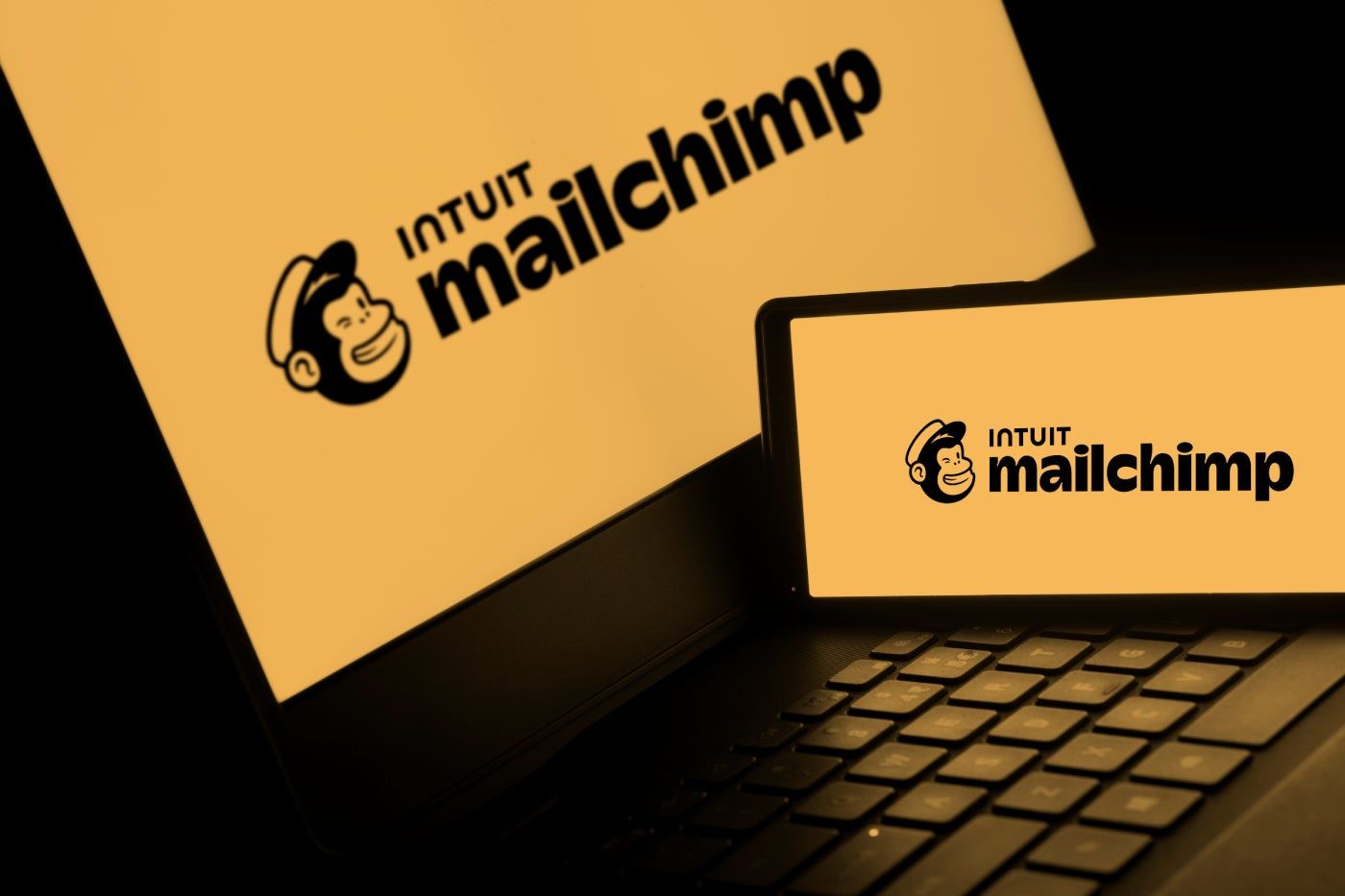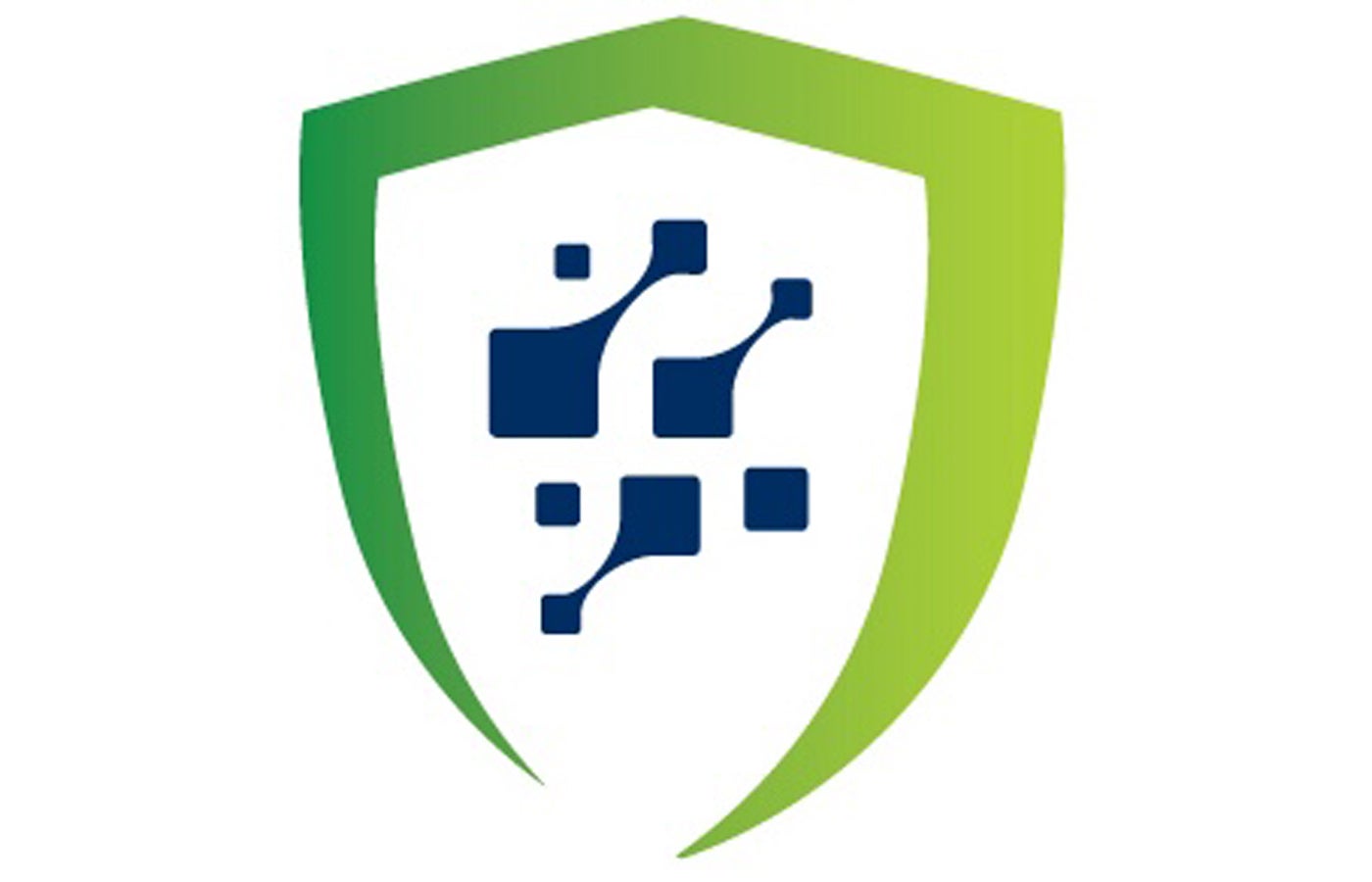Mailchimp Quick FactsOur star rating: 3.2/5 Prices:Free initial price for 500 contacts. Key Features:
|
Mailchimp is customer relationship management software with an emphasis on marketing tools. Mailchimp's marketing CRM tools connect contact data, segment leads, and create audience dashboards with buyer insights. Users can get holistic views of their audience by integrating their existing technology stack to better organize and improve marketing campaigns.
While Mailchimp can be an extremely intuitive platform to learn, there are limitations on the number of emails sent per month, as well as limits on the sales features available. This means that this platform is best suited for startups or small and medium-sized organizations. So there may be some alternatives that offer scalability to consider.
2
HubSpotCRM
Employees by company size
Micro (0-49), Small (50-249), Medium (250-999), Large (1000-4999), Business (5000+)
Micro (0-49 employees), small (50-249 employees), medium (250-999 employees), large (1000-4999 employees)
Micro, Small, Medium, Large
3
Salesforce CRM
Employees by company size
Micro (0-49), Small (50-249), Medium (250-999), Large (1000-4999), Business (5000+)
Any size of company
Any size of company
Characteristics
Calendar, collaboration tools, contact management and more
Prices
Mailchimp pricing tiers can be filtered and sorted based on the number of contacts the business has. The filtering option ranges from 500 to 250,000 contacts, making it scalable to fit the unique needs of any organization. Mailchimp also offers a questionnaire to help you identify the best plan and support option for you, with personalized recommendations.
Below is a breakdown of Mailchimp's four pricing plans:
- Free version: Basic email templates and campaigns for $0 per month based on 500 contacts
- Essentials: $13 per user, per month for 24/7 email and chat support, email templates, SMS plugins, A/B testing, and basic automated customer journeys
- Standard: $20 per user, per month for all the essentials plus custom onboarding, predictive targeting, and a campaign manager
- Premium: Starting at $350 per month based on 10,000 contacts for priority support, designed for teams
Key Features of Mailchimp
creative assistant
Mailchimp's specialized creative assistant design tool helps organizations generate personalized designs and marketing content instantly (Figure A). Businesses first import their brand assets and Mailchimp creates a brand kit. This branding kit allows users to create custom designs using their brand colors, fonts, logos, and images to quickly implement them into campaigns.
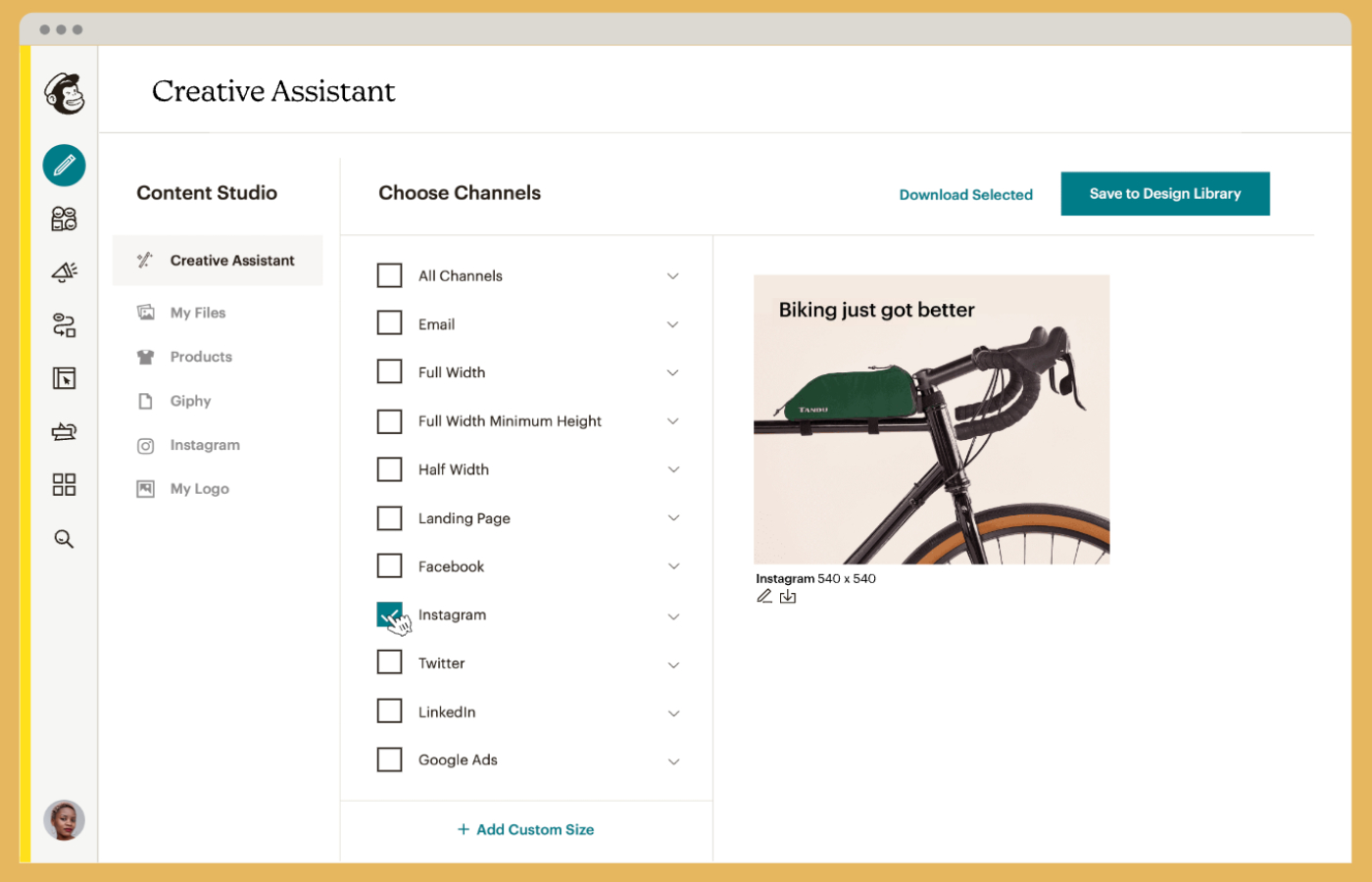
Customer Journey Builder
Organizations can map their customer journey within the Mailchimp platform. Within customer journey builders, users can drag and drop rules and their response actions to create automated workflows (Figure B). This unique feature creates journeys that help businesses visualize their marketing and sales processes to better strategize how to best engage with their prospects at the most optimal time.
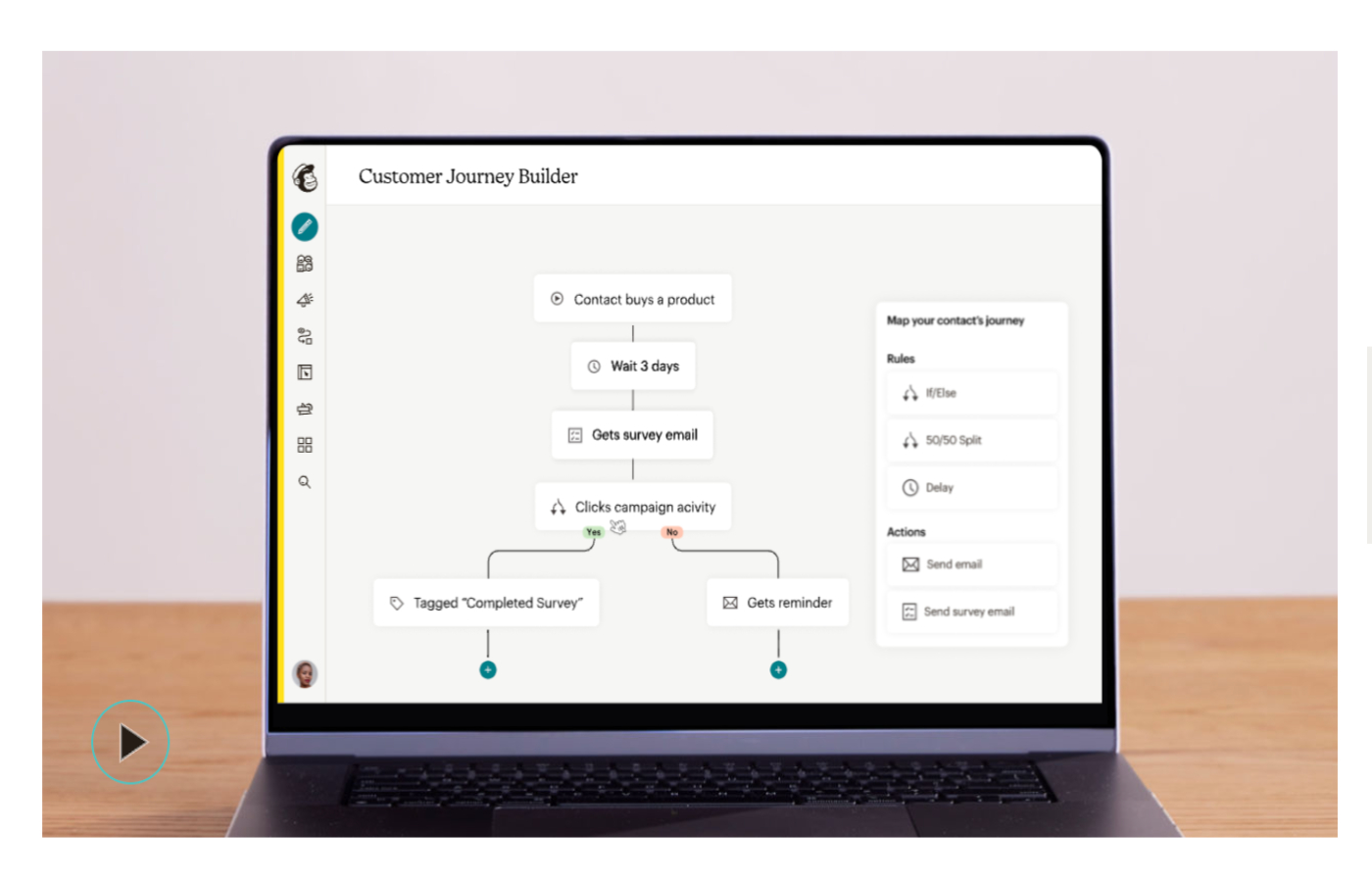
Email templates
With email templates and landing pages, users can select from 100+ pre-designed templates to launch a professional, branded campaign in minutes (Figure C). With these customizable templates, organizations can create eye-catching marketing campaigns that match their brands. Mailchimp also offers users the option to import custom HTML templates into the platform for even more customization options after upgrading to the standard plan.
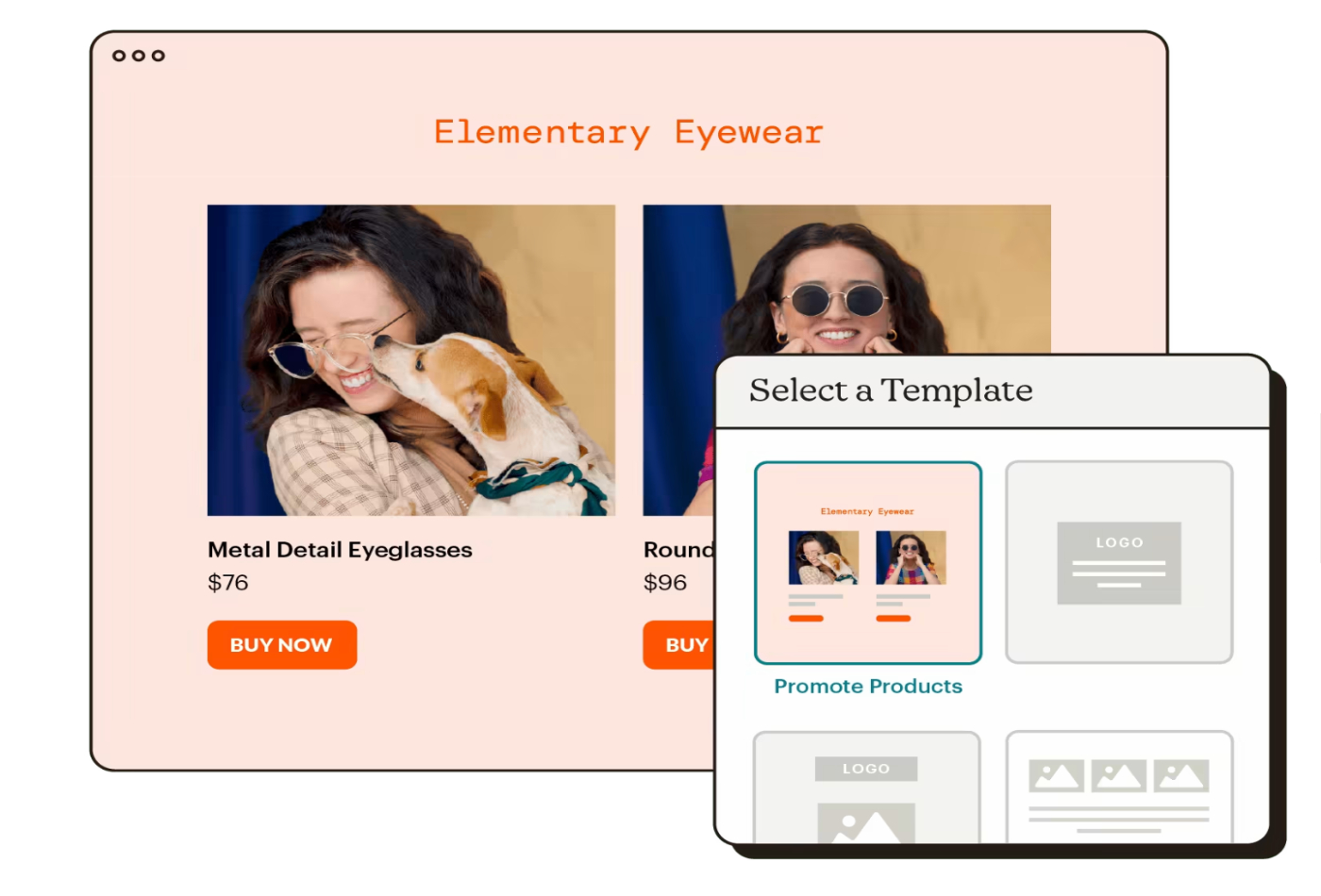
Behavioral guidance
Behavioral targeting is personalized campaigns that are deployed in response to specific actions taken by potential customers (Figure D). For example, potential customers may receive a welcome message to submit new registrations after visiting the company's website. This distinctive data-backed feature helps organizations fine-tune their audience segments by creating segments based on how potential customers have interacted with the website, apps, and marketing campaigns.

Pros and cons of Mailchimp
| Advantages | Cons |
|---|---|
| 1 month free trial. | The free tier is limited. |
| Offers multivariate and A/B testing. | Users report that the website builder is missing. |
| UX and UI are beginner friendly. | The services can be expensive for larger organizations. |
Alternatives to Mailchimp
Since Mailchimp is such a powerful email and marketing tool, its top alternatives also offer advanced marketing automations. Similar CRMs with the same marketing tools (and in some cases, more robust sales tools) include HubSpot, Zoho CRM, and ActiveCampaign.
Mailchimp is touted as the best solution for small businesses, so these alternatives we suggest also offer more scalability to support mid-level and enterprise organizations.
| Software | mailchimp | HubSpot | CRM | Active Campaign |
|---|---|---|---|---|
| Management and email campaigns. | Yeah | Yeah | Yeah | Yeah |
| Prospect evaluation | No | Yeah | Yeah | Yeah |
| Reports and analysis | Limited | Yeah | Yeah | Limited |
| AI-powered tools | Yeah | Yeah | Yeah | Limited |
| starting price | Free starting price | Free starting price | Free starting price | $29 per user, per month* |
*Price when billed annually for marketing tools.
HubSpot

HubSpot is an all-in-one customer platform that offers marketing, sales, service, and CMS hubs. While it's not open source CRM software, HubSpot's customization options are robust, with over 1,500 native and third-party integrations. Mailchimp and HubSpot offer tools like landing page builders and web forms to strengthen an organization's online presence.
Compared to Mailchimp, HubSpot's free tier supports up to 2,500 users with advanced marketing campaign management, making it one of the best free CRM software.
SEE: To learn more, read our independent HubSpot review.
CRM

Zoho CRM is a powerful sales CRM tool with advanced marketing and analytics features. Both options offer robust automations that help marketing and sales teams reduce time spent on repetitive tasks, such as emailing leads for follow-up and scheduling.
Compared to Mailchimp, Zoho CRM provides better sales performance management tools, allowing users to create customized views of pending, ongoing, and planned deals.
SEE: To learn more, head to our full Zoho CRM review.
Active Campaign

ActiveCampaign is a platform that offers email marketing, marketing automation, and CRM tools that work to help organizations create seamless customer experiences with a brand. Both providers offer a type of segmentation that ensures the right leads and audience members receive the right type of engagement, whether it's a welcome email or a follow-up notification, with the help of A/B testing flows. .
Compared to Mailchimp, ActiveCampaign provides a special eCommerce tool that connects the platform with online stores to generate revenue with abandoned cart reminders, product catalogs, coupons, and discounts.
Review methodology
To review Mailchimp's CRM, I used our TechRepublic CRM rubric to rate the vendor. The rubric consists of criteria and sub-criteria outlined around the most important factors when evaluating any CRM provider. I referenced Mailchimp's own online resources as well as comments, ratings, and reviews from real users as points of reference.
Here's the breakdown of the criteria used to rate Mailchimp:
- Cost: It weighted 25% of the total score.
- Main features: It weighted 25% of the total score.
- Customizations: It weighted 15% of the total score.
- Integrations: It weighted 15% of the total score.
- Easy to use: It weighted 10% of the total score.
- Customer Support: It weighted 10% of the total score.

